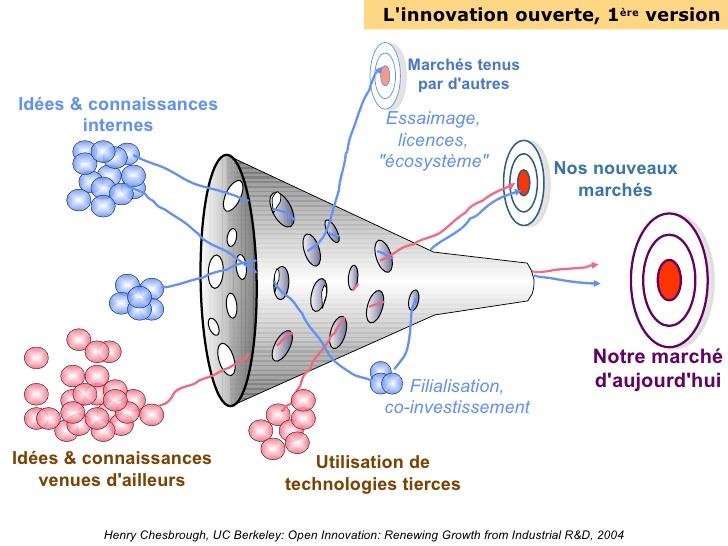Open Innovation
Definition
Open innovation is the use of purposive inflows and outflows of knowledge to accelerate internal innovation, and expand the markets for external use of innovation, respectively. Open innovation is a paradigm that assumes that firms can and should use external ideas as well as internal ideas, and internal and external paths to market, as they look to advance their technology.
Henry Chesbrough, Open Innovation: Researching a New Paradigm (2006)
Presentation

Open innovation involves, as an actor within an ecosystem, enriching oneself with external knowledge while redistributing one’s own to the rest of the ecosystem to create new solutions. In the business world, this is achieved through the sharing of intellectual property and R&D resources.
Chesbrough divides open innovation into two aspects,outside-in and inside-out.
Outside-in refers to an organization using external knowledge for its internal activities. Being able to retrieve information and include different contributions from partners and users.
Inside-out approach is to allow one’s intellectual property to be reused by others to implement their own solutions. Research knowledge, often under-exploited, can be used elsewhere. For resources central to the player, it enables others to reuse, modify and improve its solutions to benefit from potential contributions.
At the intersection of outside-in and inside-out, we can find collaborative digital environments where improvements are pooled between different complementary players, each using the solution for their own activities, with skills interacting as the resource is co-constructed.
History
The term dates back to 2003, Henry Chesbrough popularized it in his book “Open Innovation: The New Imperative for Creating and Profiting from Technology”. He contrasts two models of innovation, the traditionally closed one where companies protect their intellectual property, against an open model where knowledge circulates.
These closed models are more accustomed to not using outside knowledge and try to maintain protection over their intellectual property, to try to keep a competitive edge.